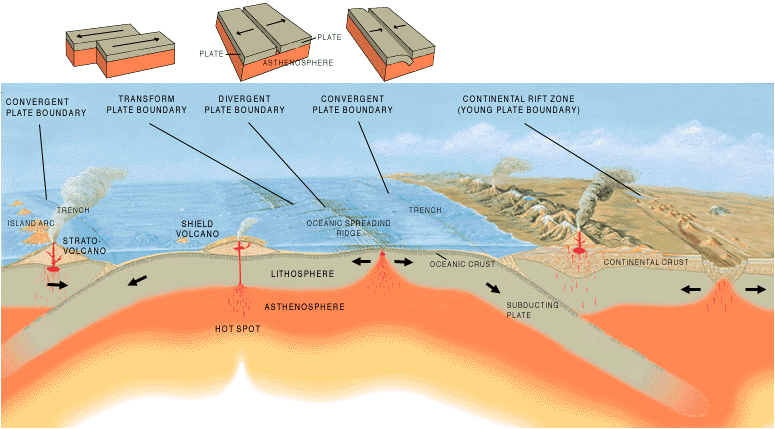Subduction Zones
Subduction zones are locations of convergent plate boundaries (where plates are moving towards each other) where one plate is pushed below the other plate and sinks into the mantle, a process called subduction. The plate sinks into the mantle at the rate of a few centimeters a year (about the rate of the plate movement).
Figure 1: Artist’s cross section illustrating the main types of plate boundaries (see text); the East African Rift Zone is a good example of a continental rift zone.

(Cross section by José F. Vigil from This Dynamic Planet – a wall map produced jointly by the U.S. Geological Survey, the Smithsonian Institution, and the U.S. Naval Research Laboratory.) (From Kious and Tilling, 1996)
Subduction Zone and Resulting Earthquake
The upper boundary layer of the mantle, the lithosphere (plate plus part of upper mantle), where the mantle cools and then thickens the boundary. Then this dense material sinks into the mantle, helping to drive convection in the mantle. This also recreates a cycle of recycling of the lithosphere, helping to bring new minerals to the surface from below and also bring hydration and other elements back into the mantle.
